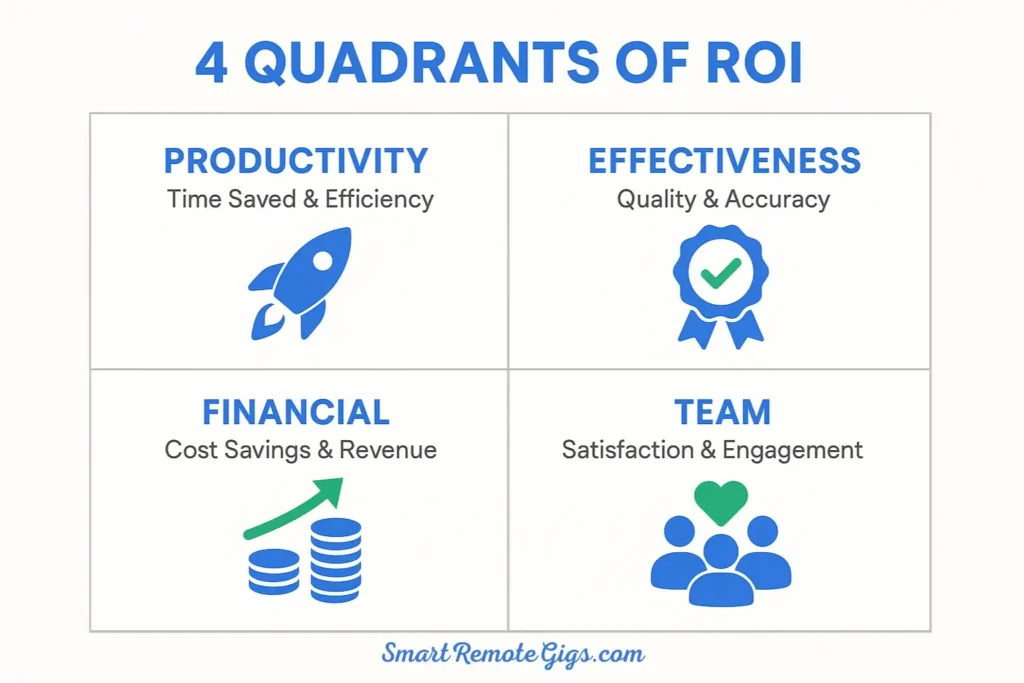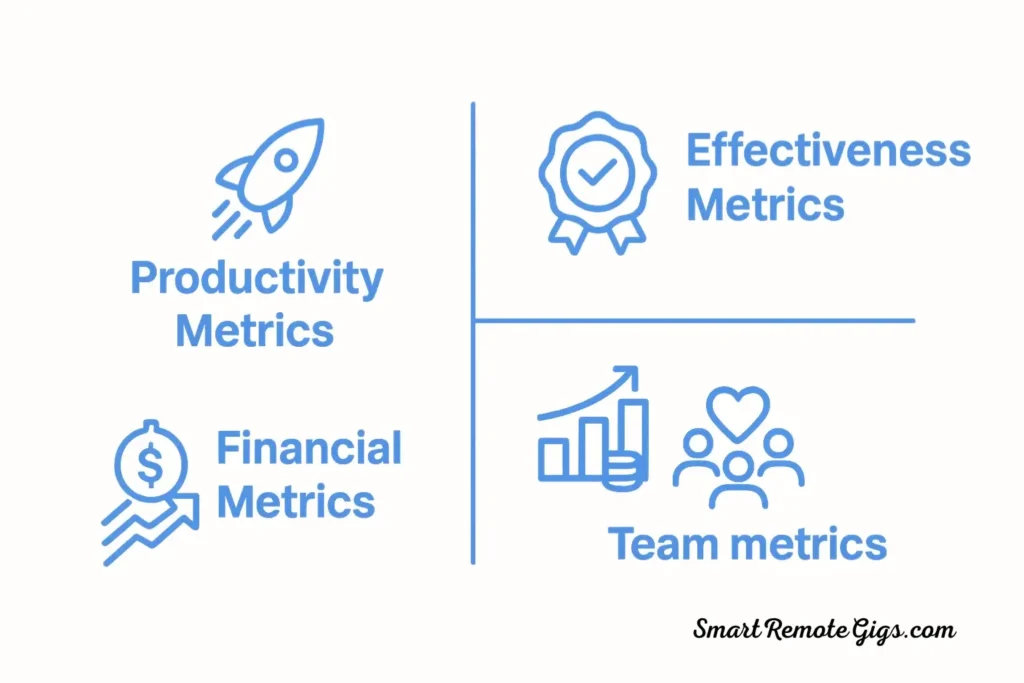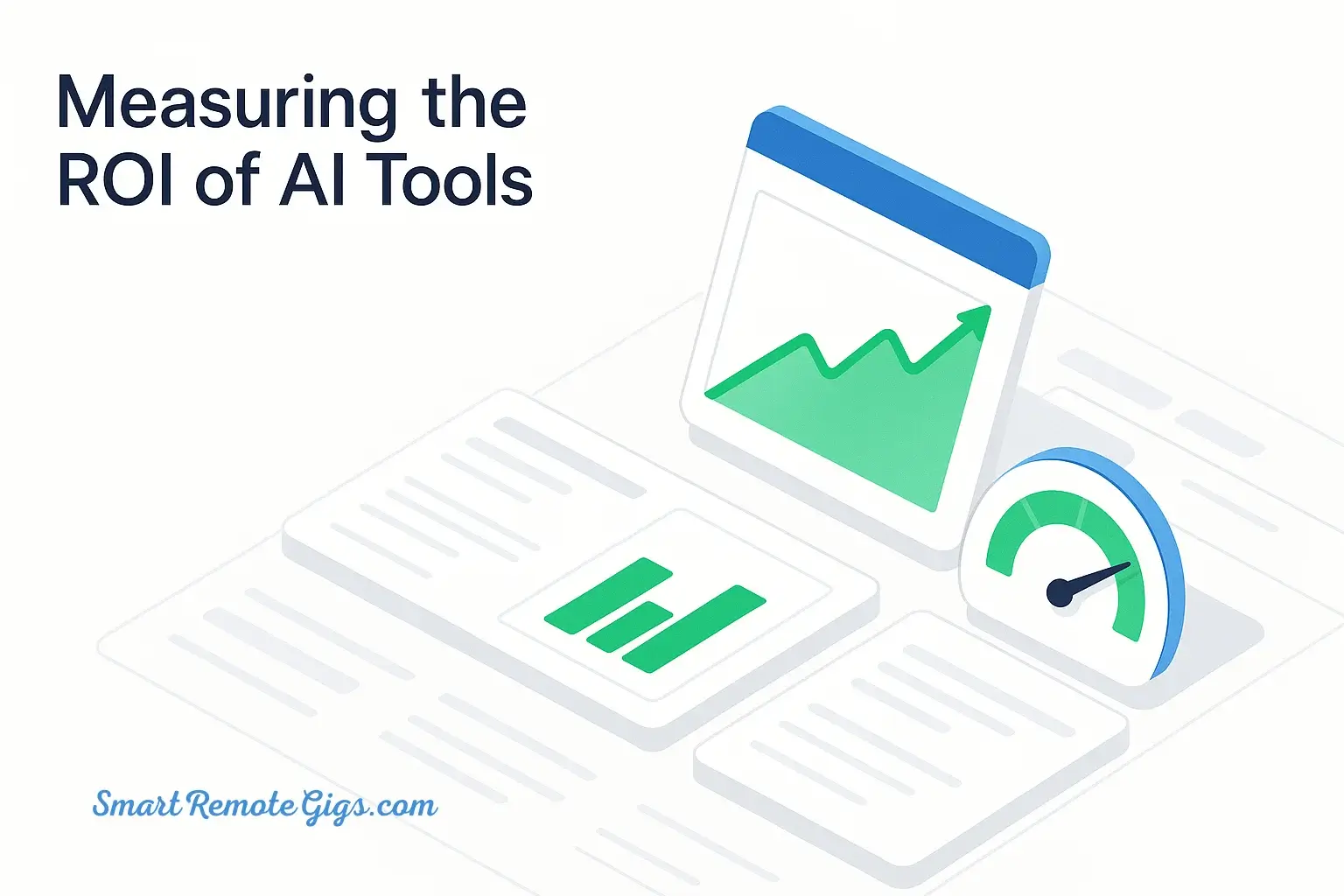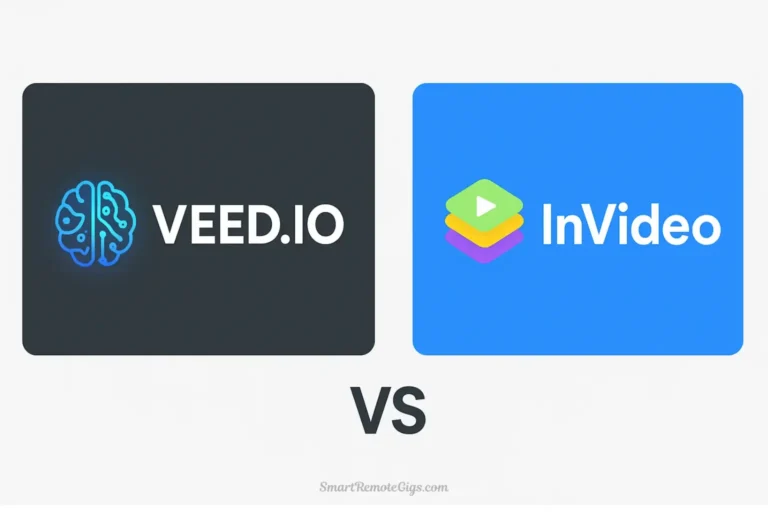“AI tools are expensive. How do we prove they’re worth the cost?” This question echoes through boardrooms and budget meetings worldwide. With AI tools averaging $25-50 per user monthly, the pressure to demonstrate concrete value from these investments has never been higher.
Measuring the ROI of AI tools is about more than just justifying spend. It allows you to optimize tool usage, identify consolidation opportunities, and build powerful cases for future investment. A systematic approach creates a foundation for intelligent decision-making across your entire technology stack.
This comprehensive framework will show you exactly how to quantify AI tool performance using proven metrics, track meaningful KPIs, and demonstrate tangible returns that satisfy both CFOs and team members.
The 4 Quadrants of AI Tool ROI: A Complete Framework

Effective ROI measurement spans four distinct quadrants, each capturing a different aspect of value. This approach ensures you’re measuring both immediate efficiency gains and longer-term strategic benefits.
Quadrant 1: Productivity Metrics (The Hard Numbers)
Productivity metrics provide the most straightforward ROI calculations because they directly translate time savings into financial returns.
Key Metric: Time Saved on Specific Tasks
Calculate precise time savings for measurable activities.
- Formula: (Hours Saved per Week) × (Team Members) × (Avg. Hourly Rate)
Task Type | Before AI | After AI | Time Saved | Weekly Value |
|---|---|---|---|---|
Meeting Summaries | 2 hours | 15 minutes | 1.75 hours | $875 |
Content Drafts | 4 hours | 1 hour | 3 hours | $1,500 |
Research Tasks | 3 hours | 45 minutes | 2.25 hours | $1,125 |
Email Responses | 1.5 hours | 20 minutes | 1.33 hours | $665 |
Based on a 10-person team with a $50/hour average rate |
Other Key Metrics:
- Task Completion Velocity: Track how quickly teams move projects from initiation to completion.
- Output Consistency: Measure how AI tools improve quality and consistency across team members (e.g., brand voice adherence, documentation accuracy).
Quadrant 2: Effectiveness Metrics (The Quality Gains)
While productivity measures speed, effectiveness metrics capture quality improvements that create significant long-term value.
Key Metric: Reduced Error Rates
Track improvements in accuracy and quality across key deliverables like documentation, marketing content, and meeting follow-ups.
Other Key Metrics:
- Improved Decision Quality: Use surveys to assess meeting effectiveness and track project success rates.
- Enhanced Collaboration: Monitor cross-functional engagement and knowledge-sharing frequency.
Quadrant 3: Financial Metrics (The Bottom Line)
Financial metrics provide the clearest ROI calculations by directly connecting tool costs to monetary returns.
Key Metric: Tool Consolidation Savings
Many AI tools can replace multiple single-purpose solutions, leading to direct cost savings.
Previous Tools | Monthly Cost | AI Replacement | New Cost | Monthly Savings |
|---|---|---|---|---|
3 Meeting Tools | $150 | All-in-one AI Platform | $75 | $75 |
2 Writing Tools | $80 | AI Writing Assistant | $30 | $50 |
4 Productivity Apps | $200 | Integrated AI Suite | $120 | $80 |
Total | $430 | Total | $225 | $205 |
Other Key Metrics:
- Direct ROI Calculation: Use the formula (Financial Gain – Tool Cost) ÷ Tool Cost × 100.
- Revenue Impact: For customer-facing teams, track how AI tools influence metrics like response time, which can lead to higher satisfaction and sales.
Quadrant 4: Team Metrics (The Human Element)
The human impact of AI tools often provides the highest long-term value but requires careful measurement to quantify.
Key Metric: Employee Satisfaction and Engagement
Use regular, anonymous surveys to track tool satisfaction scores, improvements in work-life balance, and reduced stress levels.
Other Key Metrics:
- Burnout and Context Switching Reduction: Monitor self-reported stress levels and use calendar analysis to track increases in protected focus time.
- Adoption and Engagement Rates: Track daily active users and feature utilization to see which AI capabilities drive the most value.
Your AI ROI Measurement Toolkit (A Summary Checklist)

Use this checklist to ensure you’re capturing the full spectrum of AI tool metrics.
Productivity Metrics
- Time savings calculations for core tasks
- Task completion velocity (before/after)
- Output volume metrics (documents created, tasks completed)
Effectiveness Metrics
- Error rate reductions
- Quality consistency scores
- Decision-making improvements (via surveys)
Financial Metrics
- Direct ROI calculations
- Tool consolidation savings
- Revenue impact tracking
Team Metrics
- Employee satisfaction surveys
- Burnout and stress reduction measurements
- Tool adoption and feature utilization rates
Putting Measurement into Practice: A 3-Step Plan
Having the right metrics is only half the battle. Follow these steps to implement a successful measurement process.
Step 1: Establish Your Baseline Before You Begin
Before implementing new AI tools, document your current performance. Track key activities for 2-4 weeks, assess the quality of current outputs, and survey your team to get a baseline for satisfaction and engagement.
Step 2: Set Clear Measurement Intervals
Different metrics require different measurement frequencies.
- Weekly: Track productivity and time savings.
- Monthly: Assess quality and effectiveness.
- Quarterly: Conduct a comprehensive ROI analysis and strategic review.
Step 3: Combine Data Sources for a Complete Picture
The most successful organizations combine multiple data sources for comprehensive insights, a framework recommended by Harvard Business Review. Use a mix of:
- Tool Analytics: Built-in usage and performance data.
- Time Tracking Software: Objective productivity measurements.
- Survey Platforms: Subjective satisfaction and experience feedback.
- Financial Systems: Cost and revenue impact tracking.
Conclusion: ROI is More Than Just Money Saved
Effectively measuring the ROI of AI tools requires a comprehensive approach that captures productivity gains, quality improvements, financial returns, and human impact. The Four-Quadrant Framework provides a complete picture of how AI tools transform your remote team’s capabilities.
By systematically tracking these metrics, you can move beyond simple cost-benefit calculations to demonstrate strategic value, competitive advantages, and significant improvements in team satisfaction.
- Avoid Common Mistakes Ready to implement these frameworks? Avoid costly errors by reading our guide to the 5 Pitfalls of AI Adoption.
- See the Top Tools To see which tools consistently deliver the highest ROI, check out our Ultimate Guide to AI Tools.
- Build Your Strategy For strategic insights on building a cohesive tech stack, explore our guide on How to Build and Budget for Your AI Collaboration Stack.







